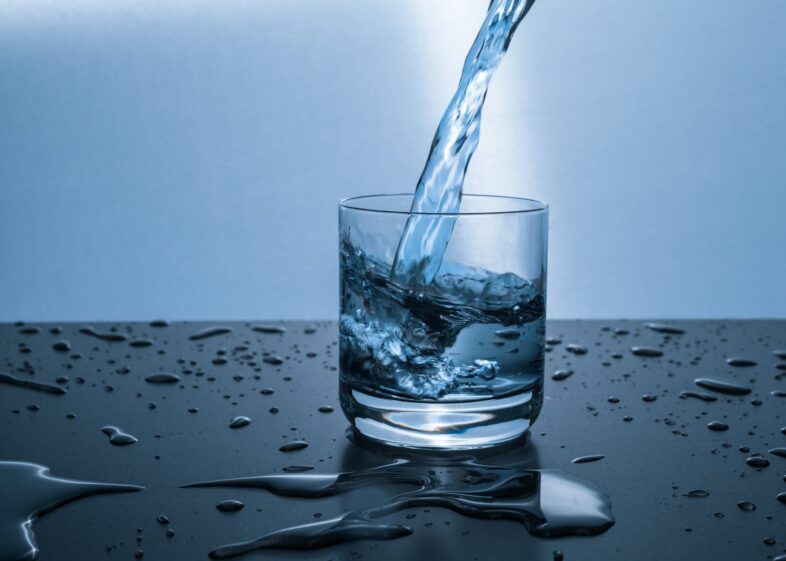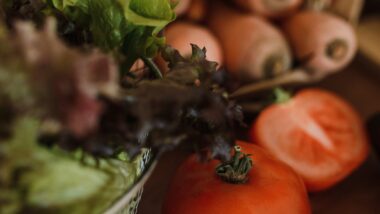5 Ways to Filter Rainwater for Drinking!
Did you know that rainwater can be a safe and sustainable source of drinking water right at your doorstep? In this article we talk about 5 ways to filter rainwater for drinking a from your home sources. Above is the Gravity Fed Water System for Home – Buy on Amazon Today!
Water is life, and in a survival situation you need multiple ways to get drinkable water especially of you are running short on bottle water.
Below is five practical methods that homeowners can use to purify rainwater, ensuring that it is clean, safe, and ready for you to enjoy. So, let’s dive into the world of rainwater filtration and discover how you can make the most of this abundant natural resource in a simple and accessible way.
1. Basic Water Filtration
When it comes to filtering rainwater for drinking, there are some basic methods that you can employ. One of the simplest ways is by using a fine mesh or screen filter. This type of filter is designed to remove larger debris, such as leaves and twigs, from the rainwater before it enters your storage tank. By installing a fine mesh or screen filter at the entry point of your rainwater harvesting system, you can prevent these larger particles from clogging your pipes or contaminating your water.
First Flush Diverter Kit for Water
Rainwater Collection System, Rain Diverter for 2×3”and 3×4” Standard Downspouts, with PVC 3/4 Spigot and Filtration Around $48 on Amazon
Another method of basic filtration is by installing a first flush diverter. This device diverts the initial runoff from the roof and captures it in a separate chamber. Since the first flush of rainwater often contains the highest concentration of contaminants, such as bird droppings or pollutants from the roof, diverting it can significantly improve the quality of the water. By allowing the water to sit in the separate chamber and flushing out the initial contaminants, you can ensure that the rainwater collected afterward is cleaner and safer to drink.
Employing a roof washer system is another effective way to filter rainwater. This system typically consists of a series of nozzles installed on the roof, which spray water over the surface after it rains. The force of the water dislodges any dirt, debris, or pollutants from the roof, effectively cleaning it before the water flows into your storage tank. By implementing a roof washer system, you can reduce the amount of sediment and contaminants in your rainwater and improve its quality for drinking purposes.
2. Settling and Sediment Filtration
Above is the Waterdrop Home Sediment Filter on Amazon <<
In addition to basic filtration methods, settling and sediment filtration techniques can be employed to further purify rainwater. One method is by creating a settling tank. This tank allows the rainwater to sit undisturbed for a period of time, allowing any suspended particles to settle to the bottom. The clearer water can then be siphoned off and transferred to your storage tank. This technique is particularly effective for removing sediment, silt, and other heavier particles from the rainwater.
Utilizing a sediment filter is another way to remove unwanted particles from rainwater. These filters are designed to capture and retain sediment, rust, and other fine particles, ensuring that the water entering your storage tank is clean and free from debris. Sediment filters are typically installed at the entry point of your rainwater harvesting system, effectively preventing these particles from entering the system and contaminating your drinking water.
For more advanced rainwater filtration, you can consider installing an underground filtration system. This system typically consists of multiple filters, including sediment filters, carbon filters, and UV sterilizers, installed underground. The rainwater collected from the roof flows through these filters, effectively removing sediment, organic matter, and harmful pathogens. By employing an underground filtration system, you can ensure that your rainwater is thoroughly purified and safe for drinking.
3. Carbon Filtration Home System
Carbon filtration (kit on Amazon) is an effective method for removing impurities and improving the taste and odor of rainwater. There are various ways to employ carbon filtration in your rainwater harvesting system. One method is by using activated carbon filters. These filters are designed to adsorb and trap organic compounds, chlorine, and other chemicals present in the rainwater. By passing the water through activated carbon filters, you can effectively remove these contaminants and improve the overall quality of your drinking water.
Another method of carbon filtration is by employing a carbon block filter. Similar to activated carbon filters, carbon block filters use a dense carbon block to remove impurities from the water. These filters are particularly effective in removing chlorine, volatile organic compounds (VOCs), and other chemical contaminants. By incorporating a carbon block filter into your rainwater filtration system, you can ensure that your drinking water is free from harmful substances and tastes fresh.
Utilizing a granular activated carbon (GAC) system is another way to filter rainwater for drinking. GAC systems consist of a bed of granulated carbon that removes impurities as the water passes through it. This method is effective in removing a wide range of contaminants, including chlorine, pesticides, herbicides, and other organic compounds. By utilizing a GAC system in your rainwater harvesting system, you can achieve excellent filtration results and enjoy clean and safe drinking water.
4. UV Sterilization for Drinking Water
UV sterilization is a highly effective method for eliminating bacteria, viruses, and other microorganisms from rainwater. This method works by exposing the water to ultraviolet light, which disrupts the DNA of the microorganisms, rendering them unable to reproduce and causing them to die. Installing a UV sterilizer system in your rainwater harvesting system ensures that the water is continuously treated and free from harmful pathogens.
Another option for UV sterilization is utilizing UV light-emitting diodes (LEDs). UV LED technology is becoming increasingly popular due to its energy efficiency and long lifespan. UV LEDs emit UV light in a specific wavelength that is effective in neutralizing microorganisms. By incorporating UV LEDs into your rainwater filtration system, you can effectively disinfect the water and ensure its safety for drinking.
For a compact and portable UV sterilization option, you can consider employing UV disinfection pens. These pens use UV light to disinfect small amounts of water. Simply immerse the pen in a glass or container filled with rainwater, and the UV light will kill any harmful microorganisms present. UV disinfection pens are particularly useful for outdoor activities, camping, or emergency situations where access to clean drinking water may be limited.
5. Reverse Osmosis
Reverse osmosis is a highly effective method for purifying rainwater. This method utilizes a semipermeable membrane that allows water molecules to pass through while trapping larger particles, ions, and contaminants. By installing a reverse osmosis system in your rainwater harvesting system, you can achieve thorough filtration and produce clean and pure drinking water.
Utilizing a reverse osmosis membrane is a key component of this filtration method. The membrane is designed to remove a wide range of impurities, including bacteria, viruses, dissolved solids, and heavy metals. By forcing the rainwater through the membrane, contaminants are effectively separated, providing you with high-quality water for drinking.
Employing a multi-stage filtration process is another aspect of reverse osmosis. This process typically includes pre-filtration stages, such as sediment filters and carbon filters, which remove larger particles and chemicals before the water reaches the reverse osmosis membrane. By incorporating multiple filtration stages, you can enhance the efficiency of the reverse osmosis system and achieve superior water quality.
Factors to Consider for Rainwater Filtration
Before choosing a method of rainwater filtration, there are several factors you should consider. First, water quality testing is crucial in understanding the composition of your rainwater and determining the level of filtration required. Conducting tests for pH levels, hardness, bacteria, and other contaminants can help you choose the appropriate filtration methods for your specific needs.
It is also important to consider the required filtration level based on your intended use of the water. Drinking water typically requires a higher level of filtration compared to other non-potable uses, such as irrigation or washing cars. By understanding your specific filtration needs, you can select the most suitable methods and filters for your rainwater harvesting system.
Consideration of household water demand is another crucial factor. Evaluate how much rainwater you expect to collect and how it aligns with your household water consumption. This will help you determine the size and capacity of your filtration system. Additionally, consider the infrastructure and maintenance requirements of the filtration methods you choose. Some systems may require regular cleaning, filter replacements, or professional maintenance, so it’s essential to factor in the associated time and costs.
Evaluating cost-effectiveness is also important. While rainwater filtration systems require initial investment, they can lead to long-term cost savings by reducing reliance on the public water supply. Analyze the potential savings in terms of reduced water bills and compare them to the upfront costs of installing and maintaining a filtration system.
Advantages of Filtering Rainwater
Filtering rainwater for drinking offers several advantages that make it an appealing option for homeowners. Firstly, it provides a sustainable water source. Rainwater is a renewable resource that can be collected and utilized without depleting groundwater or relying on energy-intensive water treatment processes. By harnessing rainwater, you can reduce your environmental impact and contribute to a more sustainable future.
An additional advantage of filtering rainwater is reduced dependence on the public water supply. By using harvested rainwater for drinking, you can alleviate the strain on municipal water sources, particularly during times of drought or water scarcity. This can help conserve the available water resources and ensure their availability for essential needs.
Furthermore, filtering rainwater is an environmentally-friendly choice. By reducing the demand for treated water, you indirectly decrease the energy consumption and carbon emissions associated with water treatment and distribution. Additionally, by using natural and eco-friendly filtration methods, you minimize the use of harmful chemicals and contribute to a cleaner and healthier environment.
Filtering rainwater can also lead to lower water bills. By relying less on the public water supply, you can significantly reduce your monthly water expenses. While the initial investment in rainwater filtration systems may require some upfront costs, the long-term savings can offset these expenses and result in overall financial benefits.
Lastly, filtering rainwater offers enhanced control over water quality. By utilizing advanced filtration methods, you can ensure that the water you and your family consume is clean, safe, and free from contaminants. This gives you peace of mind and confidence in the quality of your drinking water.
Disadvantages of Filtering Rainwater
While there are numerous advantages to filtering rainwater, it is essential to consider the potential disadvantages as well. First and foremost, rainwater filtration systems require an initial investment. Depending on the complexity and scale of the system, the upfront costs can vary. It is important to assess your budget and determine the feasibility of installing a rainwater filtration system based on your financial capabilities.
Another disadvantage is the limited availability of rainwater during droughts. In regions where rainfall is scarce or irregular, relying solely on rainwater for drinking may not be a practical option. It is important to assess the local climate and the availability of rainwater throughout the year to determine if rainwater filtration is a viable solution for your water needs.
Additional maintenance and monitoring are required for rainwater filtration systems. Regular cleaning of filters, periodic replacements, and system inspections are necessary to ensure optimal performance and water quality. It is important to factor in the time and effort required for maintenance when considering rainwater filtration as a drinking water source.
There is also a potential risk of contamination from roof materials. Depending on the type and condition of your roof, rainwater can pick up pollutants, debris, or chemicals during the collection process. It is crucial to carefully consider the roofing materials and their compatibility with rainwater collection systems to mitigate the risk of contamination.
Lastly, there is a slight risk of system malfunctions with rainwater filtration systems. Depending on the complexity and design of the system, there is a possibility of technical issues or failures. It is important to choose reliable and high-quality components for your filtration system and conduct regular inspections to identify any potential problems.
Safety Precautions for Rainwater Consumption
When it comes to filtering rainwater for drinking, there are some important safety precautions to keep in mind. Regularly testing the filtered water is crucial to ensure its quality and safety. Conduct periodic tests for pH levels, bacteria, and contaminants to verify that the filtration system is effectively removing impurities and providing clean drinking water.
Proper storage and protection from contaminants are also important. Ensure that your rainwater storage tanks are securely sealed and protected from insects, animals, and external pollutants. Regularly clean the tanks and inspect the interior for any signs of contamination or deterioration. Implementing a filtration system with a final stage of disinfection, such as UV sterilization, can further enhance the safety of stored rainwater.
Avoid using rainwater for certain activities that require higher water quality standards, such as preparing baby formula or washing open wounds. It is important to be mindful of the intended uses of rainwater and allocate it accordingly to avoid any potential health risks.
Educating household members about potential risks and proper usage of rainwater is crucial. Ensure that everyone in your household understands the importance of safe rainwater consumption, the limitations of rainwater filtration systems, and any specific guidelines or precautions to follow.
Lastly, always follow local regulations and guidelines regarding rainwater harvesting and filtration. Different regions may have specific requirements or restrictions, and it is important to comply with them to ensure the legality and safety of your rainwater filtration system.
Concluding How to Filter Rainwater for Drinking at Home
Filtering rainwater for drinking at home provides you with a practical and sustainable solution for accessing clean and safe water. By employing various filtration methods, such as basic filtration, settling and sediment filtration, carbon filtration, UV sterilization, and reverse osmosis, you can effectively remove impurities and contaminants from rainwater.
Consider important factors such as water quality testing, filtration levels, household water demand, infrastructure and maintenance requirements, and cost-effectiveness when selecting a rainwater filtration system.
At a Minimum You Need Water Filtration Tablets in Your Go Bag
Above is the Water Purification Tablets on Amazon- Buy Today!
While there are advantages, including sustainability, reduced dependence on the public water supply, environmental friendliness, lower water bills, and enhanced control over water quality, it is important to consider the disadvantages. These include: initial investment, limited water availability during droughts, additional maintenance, potential contamination risks, and system malfunctions. To ensure the safety of rainwater consumption, regular testing, proper storage, mindful usage, household education, and adherence to local regulations are essential.
By considering the comprehensive information and precautions provided, homeowners can make informed decisions about filtering rainwater for drinking at home. Buy your water filtration system on Amazon today!








